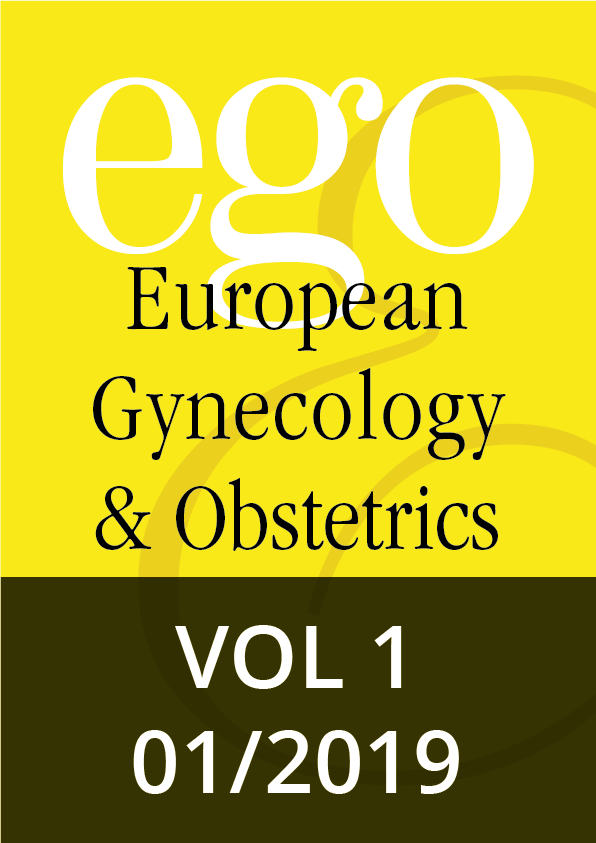In memoriam, 002–002
Editorial, 003–003 | DOI: 10.53260/ego.191011
Reviews, 005–009 | DOI: 10.53260/ego.191012
Reviews, 010–017 | DOI: 10.53260/ego.191013
Reviews, 018–023 | DOI: 10.53260/ego.191014
Case reports, 024–026 | DOI: 10.53260/ego.191015
Case reports, 027–028 | DOI: 10.53260/ego.191016
Original articles, 029–033 | DOI: 10.53260/ego.191017
Original articles, 034–038 | DOI: 10.53260/ego.191018
Original articles, 039–042 | DOI: 10.53260/ego.191019
Original articles, 043–047 | DOI: 10.53260/ego.1910110
Original articles, 048–050 | DOI: 10.53260/ego.1910111
Original articles, 051–054 | DOI: 10.53260/ego.1910112
Original articles, 055–060 | DOI: 10.53260/ego.1910113
Bone density and body weight is associated with MTHFR677 polymorphism in girls with anorexia nervosa
Original articles, 061–064 | DOI: 10.53260/ego.1910114
Fallopian tube and endometriosis: an ambiguous relationship
Abstract
Background: The Fallopian tube, or oviduct, plays an essential role in mammalian reproduction. Endometriosis affects 2 to 10% of women of reproductive age. Infertility and nulliparity are regarded as risk factors for endometriosis, therefore an increased prevalence of this affliction in the population of infertile women may be expected. The literature shows that endometriosis affects 30% to 68% of infertile women. However, its prevalence varies considerably depending on the type of infertility (i.e. male or female), the presence of chronic pelvic pain, and whether or not a previous exploratory laparoscopy was performed. The effects of endometriosis on fertility are still debated. While the impact of moderate or severe endometriosis on fertility is well established, especially in the presence of adhesions, the role of minimal or mild lesions, which are the most common in infertile women, is still controversial. Therefore, different possible underlying mechanisms have been proposed, including tubal alterations associated with endometriosis. Conclusion: Tubal pathologies have an influence on fertility in these patients. This short review analyzes the effect of tubal endometriosis on fertility.
Keywords: etiopathogenesis., infertility, Oviduct, tubal endometriosis
Citation: Audebert A.,Timmermans M.,Lismonde A.,Brichant G.,Nisolle M., Fallopian tube and endometriosis: an ambiguous relationship, EGO European Gynecology and Obstetrics (2019); 2019/01:018–023 doi: 10.53260/ego.191014
Published: September 2, 2019
ISSUE 2019/01

In memoriam, 002–002
Editorial, 003–003 | DOI: 10.53260/ego.191011
Reviews, 005–009 | DOI: 10.53260/ego.191012
Reviews, 010–017 | DOI: 10.53260/ego.191013
Reviews, 018–023 | DOI: 10.53260/ego.191014
Case reports, 024–026 | DOI: 10.53260/ego.191015
Case reports, 027–028 | DOI: 10.53260/ego.191016
Original articles, 029–033 | DOI: 10.53260/ego.191017
Original articles, 034–038 | DOI: 10.53260/ego.191018
Original articles, 039–042 | DOI: 10.53260/ego.191019
Original articles, 043–047 | DOI: 10.53260/ego.1910110
Original articles, 048–050 | DOI: 10.53260/ego.1910111
Original articles, 051–054 | DOI: 10.53260/ego.1910112
Original articles, 055–060 | DOI: 10.53260/ego.1910113
Bone density and body weight is associated with MTHFR677 polymorphism in girls with anorexia nervosa
Original articles, 061–064 | DOI: 10.53260/ego.1910114
